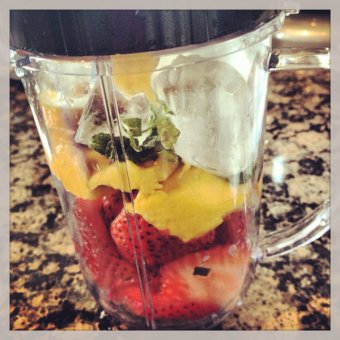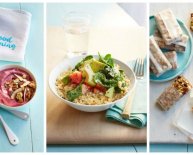
Healthy fruit shakes to lose weight
 BY CARLYE WAXMAN RD, RDN  |  Thereâs no debate about what constitutes the full biological value of vitamins and minerals in your fruits and vegetables. In any form, these low-calorie foods aid in weight loss â but when vegetables are cooked, we know there is some loss of their vitamins and minerals. This could be the biggest reason that the raw foods diet became popular and widespread. So how much of these vitamins and minerals do we really needâ.and how crazy should we get about maximizing them?
BY CARLYE WAXMAN RD, RDN  |  Thereâs no debate about what constitutes the full biological value of vitamins and minerals in your fruits and vegetables. In any form, these low-calorie foods aid in weight loss â but when vegetables are cooked, we know there is some loss of their vitamins and minerals. This could be the biggest reason that the raw foods diet became popular and widespread. So how much of these vitamins and minerals do we really needâ.and how crazy should we get about maximizing them?
Though Iâve worked in the field of dietetics for the past five years, Iâve just recently started drinking fruits and vegetables. As a former firm believer in eating your foods instead of drinking them, I now have a newfound appreciation for vitamin-rich and slim-feeling shakes. They not only make me feel âhealthier, â but also start my day off right on the weekend.
Before I go into my secret smoothie recipes, Iâd like to break down the difference between (and the relative merits of) juicing and blending â a debate I had during a random dinner conversation amongst nutrition enthusiasts. It all started with wedding gifts of a juicer and a Magic Bullet (whose long-running infomercial most late night or weekend couch potatoes have seen by now). The couple wasnât sure which contraption to keep.
My Bullet, thanks to my cousin who apparently had no use for it, has become my new favorite appliance. Though not a âreal juicer, â it can pulverize my spinach and kale (which makes it taste creamy, as opposed to frothy). I feel bad about the left-behind pulp, so I add that back in after. Iâm very happy with this â and the fact that it fits very snugly behind my Keurig machine in my two-by-two kitchen.
So clearly, I was a bit biased during this debate. The others at the table started talking about the benefits of juicing. While the newlyweds were waffling between their juicer or their Bullet, I was thinking that the former â a huge, expensive machine â must have a healthy purpose, right? The answer to that depends on what you are trying to get out of your fruits and vegetables.
By far, blending is the best at delivering the most nutrients and fiber. It also promotes satiety and weight loss. Blending does introduce some oxygen and heat, so this method can decrease the amount of Vitamin C and some B vitamins. But how much do we actually need in our bodies? One cup of carrots alone has 407.6 percent of your Vitamin C needs, so I think youâre okay. Some super foods you can have in large quantities, like spinach and kale. With only 15-30 calories in two cups of these greens, youâre getting a very large amount of fiber, iron, Vitamin A and C.
When you juice, fiber and some nutrients are removed. This can promote overeating, as we donât get full on the sugar of the fruit and vegetables. In fact, that mechanism will spike your blood sugar levels â which isnât the best for your body, and definitely not good if you are a diabetic. The calories are concentrated when juicing, especially if you use more fruit than vegetables, and can promote weight gain. The only benefit I can see with juicing is that if you canât have fiber due to specific diseases like Crohnâs Disease, diverticulitis, or irritable bowel syndrome, Â juicing can be a good way for you to get vegetables and fruit into your diet. Please note, taking out fiber does not make vitamin and mineral absorption more prevalent. It makes sugar absorb more quickly into the bloodstream, which is not the same thing.

















